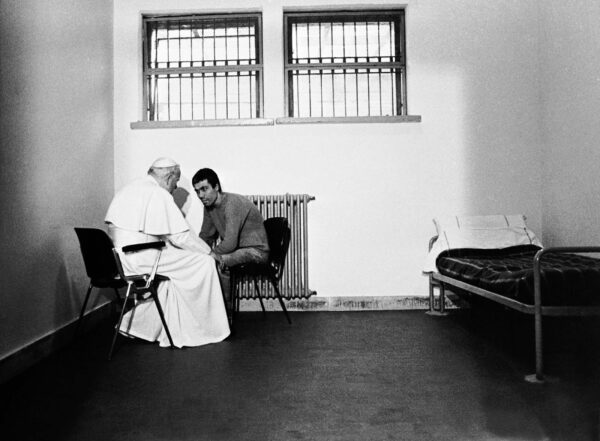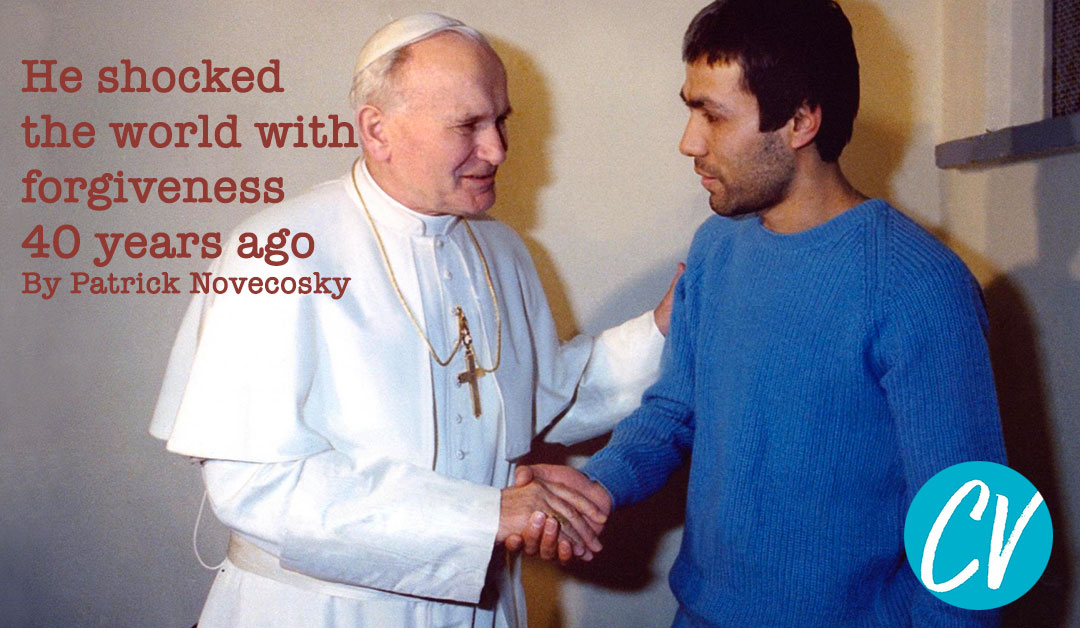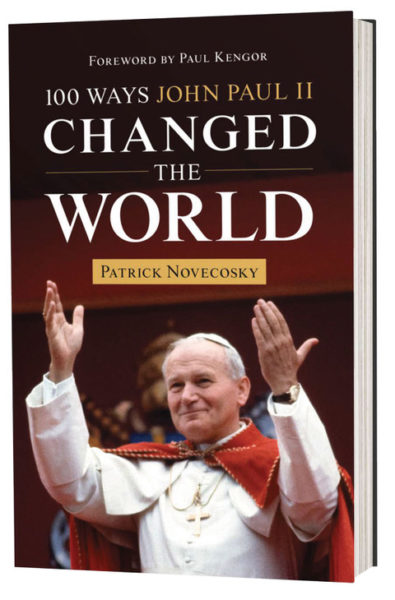Christmas is a season of praise and thanksgiving for the incarnation of God in Jesus Christ.
But it’s also a time of peace and seeking forgiveness.
Forty years ago on Wednesday, Pope John Paul II showed the world that radical forgiveness is possible when he visited his would-be assassin in prison.
Two-and-a-half years earlier, Turkish gunman Mehmet Ali Ağca shot the future saint with a 9 mm Browning semi-automatic pistol during the Pope’s general audience in St. Peter’s Square.
The Pope had forgiven Ağca moments after bullets struck him. Before he lost consciousness on the way to the hospital, he told his longtime personal secretary, Father Stanislaw Dziwisz, that he forgave the shooter.
“I was suffering — there was reason to fear, but I had a sort of strange confidence [that he would survive],” he wrote in 2005. “I told Father Stanislaw that I forgave the assassin.”
The Holy Father asked the world from his hospital bed to “pray for my brother … whom I have sincerely forgiven.” He then lobbied the Italian president to pardon him. The pardon came in June 2000.
But what most intrigued the world was John Paul’s visit with Ağca in prison on Dec. 27, 1983. The Pope requested the meeting and brought his own photographer and video crew.
The two met two days after Christmas in Ağca’s cell in Rome’s Rebibbia Prison. They spoke privately, seated close together in a corner of the cell. Ağca kissed John Paul’s hand, and they talked for 21 minutes.
As John Paul rose to leave, he gave Ağca a rosary in silver and mother-of-pearl. After the event, many were astounded to learn that Ağca had not been handcuffed and that his cell door had been left ajar. A Vatican photographer captured the event at the Pope’s request to show the world that forgiveness and mercy are possible in a fallen world.

Pope Saint John Paul II meets with his would-be assassin in prison on Dec. 27, 1983.
“Ali Ağca had probably sensed that over and above his own power, over and above the power of shooting and killing, there was a higher power,” the Pope wrote in his 2005 book, Memory and Identity. “He then began to look for it. I hope and pray that he found it.”
Ağca served 19 years in an Italian prison before the pardon. Italy then deported him to Turkey, where he served a 10-year sentence. He converted to Roman Catholicism in 2007 and was released from jail three years later. Ağca has repeatedly expressed remorse for shooting the Pope.
Coincidentally, President Ronald Reagan, who considered the Pope his “best friend,” sought to visit his own would-be assassin in prison.
John Hinckley, Jr. shot Reagan just six weeks before Ağca attacked John Paul II.
Like the Pope, Reagan was critically wounded. And like his Catholic brother, the Protestant president forgave the shooter before getting on the operating table in 1981.
Reagan scholar Paul Kengor notes that the Holy Father’s visit with Ağca impressed the president. He reached out to Hinckley’s doctors at St. Elizabeth’s Hospital, the federally operated psychiatric facility where his shooter was confined. A court had found Hinckley not guilty on all counts by reason of insanity in 1982.
The president had forgiven Hinckley from his heart but now wanted to do so in person. However, the hospital’s top psychiatrist advised against it.
“He really wanted to do it,” Dr. Roger Peele wrote in a 2005 letter to the Washington Post. Reagan deferred to the doctor’s judgment. “He only wanted to do what was in Mr. Hinckley’s best interests.”
Both Reagan and John Paul credit God’s providence for surviving the shootings. Both men saw their recoveries as a second chance to be “all in” for God and His plan. Both men magnanimously reached out to their shooters to extend forgiveness.
The gestures impacted both would-be assassins.
“I’m truly sorry. I really am,” Hinckley told Nightline in 2022 before asking Reagan’s family for forgiveness. In September 2021, a federal judge approved Hinckley’s unconditional release.
John Paul kept the details of his 1983 prison cell conversation with Ağca secret. However, he wanted to demonstrate that forgiveness was not only possible but necessary.
“The Lord has given me the grace to let us meet as men, as brothers, because all the events of our lives must confirm that God is our Father, and we are all his children in Jesus Christ and thus are all brothers,” the Pope told reporters after the meeting.
Great leaders like Reagan and John Paul II know that forgiveness is empowering and freeing. Their examples give us hope that peace is possible at Christmas and beyond the season.
Patrick Novecosky is a Virginia-based journalist, author, international speaker, and pro-life activist. He met Pope St. John Paul II five times. His latest book is “100 Ways John Paul II Changed the World.”
This article originally appeared at CatholicVote.org on Dec. 27, 2023.


